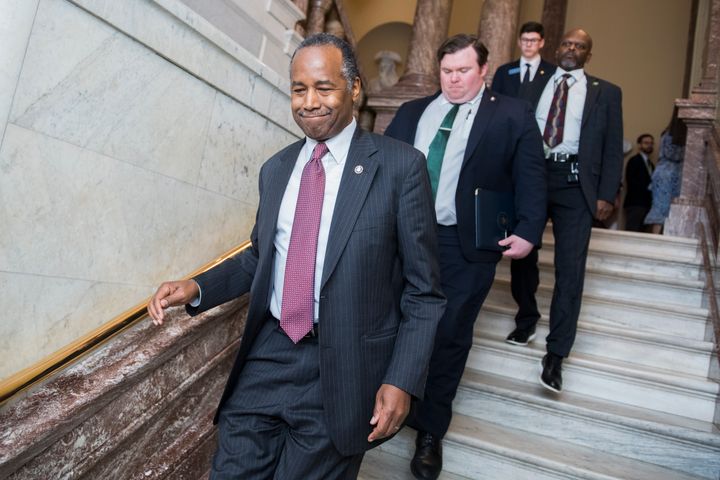
Nearly 110,000 people in public housing could face eviction under a newly proposed Trump administration rule ― and about half of them are children who are legally allowed to live there, the Department of Housing and Urban Development acknowledged Friday.
HUD’s new rule is meant to target families with mixed-citizenship status who are receiving housing assistance. It comes just a few weeks after Housing Secretary Ben Carson promised to “make certain our scarce public resources help those who are legally entitled to it.”
Under the current rules, undocumented immigrants cannot receive housing assistance on their own, but they can live in households where at least one member is eligible for assistance ― a category that includes U.S. citizens, lawful permanent residents, refugees and asylum seekers.
The ineligible members do not need to declare their immigration status. Rather, they simply declare themselves “ineligible,” and the household rent is prorated around the immigration status of everyone living there. But the Trump administration considers these ineligibility declarations a loophole.
HUD’s proposed rule, published Friday in the Federal Register and first reported by The Washington Post, would step up efforts to vet the immigration status of every person living in subsidized housing under the age of 62.
In an analysis of its proposed rule change, HUD said that “mixed-family” households typically contain three members who are eligible for the housing assistance and one who is not.
According to the National Low Income Housing Coalition, such families ― those that include any undocumented immigrants ― could be evicted after 18 months, and subject to homelessness if they are unable to find or afford other housing.
Around 25,000 families of mixed-immigration status are currently receiving housing assistance, mainly in Texas, California and New York, HUD said in its analysis. Those households represent about 108,104 individuals, around 70% of whom are legally eligible for benefits. About 56,030 of those are children.
The Washington Post noted that such analyses are typically written by career staff at the department.
HUD sought to justify the rule in the Federal Register by pointing to its obligation to provide assistance only to people who are eligible ― that is, U.S. citizens and certain other groups. Carson has also said the new standards would cut down on waitlists for public housing, and that the Trump administration is “putting America’s most vulnerable first.”
By HUD’s own analysis, though, the rule would reduce public housing availability.
Implementing it would cost an additional $193 to $227 million per year, the agency said, because households with only eligible members in them would receive higher subsidies. And since HUD believes it is unlikely to receive a funding hike from Congress, the rule would therefore probably “reduce the quantity and quality of assisted housing in response to higher costs.”
The agency also acknowledged that the new policy could lead to homelessness.
“HUD expects that fear of the family being separated would lead to prompt evacuation by most mixed households,” it said in its analysis. “Temporary homelessness could arise for a household, if they are unable to find alternative housing.”
“We are really concerned that children are the biggest losers in this rule,” Kristen Torres, the policy director for child welfare and immigration for First Focus on Children, a nonprofit group that advocates for children, told HuffPost. “They already experience higher rates of poverty because their parents or an undocumented member of their family already faces structural barriers to work and to receiving assistance.”
The policy is “going to have a chilling effect on immigrant families trying to access housing moving forward,” said Cara Baldari, the group’s vice president of family economics, housing and homelessness. “This is just the beginning.”
Following HUD’s initial announcement of its new rule last month, Diana Yentel, president of NLIHC, speculated that “the true purpose may be part of this Administration’s effort to instill fear in immigrants throughout the country.”
Representatives for First Focus and NLIHC said the rule would do nothing to affect waitlists, despite Carson’s assertion otherwise.
HUD outlined alternatives to the plan, suggesting in part that the agency could grandfather in current residents and apply the new rules going forward. Affected families may also choose to stay in their current homes and pay the unsubsidized market rent, if they can afford to do so.
The agency is slated to reevaluate its proposal after a 60-day comment period.
